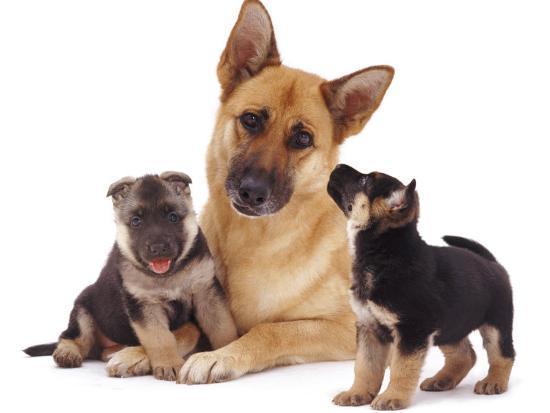Various problems can affect the reproductive organs of dogs, including infections and tumors. Neutering, which is often advised in the case of family pets, can reduce the risk of serious disorders in both sexes.
Signs of reproductive disorder in dogs can be the followings:
- Distended abdomen
- Discharge from vulva
- Enlargement of mammary glands and milk production
- Lumps in mammary glands
- Behavioral changes
- Irregularly sized testicles
Normal Cycles in Females
If you have an unneutered female, it is important to understand what happens during her normal reproductive cycle. A dog can be expected to have her first menses from six months of age, and she will then continue to come into heat every 6-12 months, although there can be wide variations.
She will lose a variable quantity of blood from the vulva, which you may miss if she is meticulous about washing. If you do not want her to be mated, you should isolate her while she is in heat to avoid attracting every intact male in the area.
False Pregnancy
This is a normal part of the female’s reproductive cycle that happens a few weeks after her cycle is over. Often, a female shows signs of maternal behavior, or nesting, when she takes toys and other objects into her bed.
Her teats may become swollen and her mammary glands may start producing milk. False pregnancy can, however, also result in unpredictable behavior and aggression, which may respond to drug treatment.
Mammary Tumors
Tumo rs of the mammary glands often develop around the time a female is in heat, with the influx of hormones, but they can also arise independently of the reproductive cycle.
rs of the mammary glands often develop around the time a female is in heat, with the influx of hormones, but they can also arise independently of the reproductive cycle.
Mammary tumors may be benign but if they are malignant, they have the potential to spread to adjacent mammary glands and to the lungs. The likelihood of tumors developing is reduced by neutering before your female has had many cycles.
Your vet will routinely run a hand along your female’s belly, feeling the mammary glands for masses. Should you find a growth then contact your vet.
Womb Infection
Infection of the womb, or pyometra, classically develops a few weeks after a dog has been in heat. You may notice that there is an unpleasant discharge from her vulva but little other apparent illness.
Alternatively, your dog may be very ill, running a fever, lacking an appetite, vomiting, drinking excessively and urinating frequently. She may have a tender, distended abdomen.
The usual treatment is neutering, but the risk of complications is high because of the dog being unwell. Sometimes the infection clears up with a course of antibiotics but is likely to return after the next cycle. Ideally, neutering can take place before then, while the dog is fit and healthy.
Retained Testicles
In male dogs, one testicle or both may be retained within the abdomen or in the groin rather than being in the scrotum. If
a puppy has retained testicles, the vet will regularly check the scrotum until the testicles are fully descended.
If this does not happen, neutering will be advised because the condition carries an increased chance of testicular tumors.
Testicular Tumor
In older dogs, there may be a noticeable disparity in the size of the testicles. The development of a testicular tumor will often make one testicle large and firm while the other shrinks down and becomes flabby. Treatment is to remove both testicles, but will not cure a tumor that has spread.
Neutering
If you do not intend to breed your dog, he or she can be neutered before reaching sexual maturity. In females, neutering avoids such problems as womb infections and growths in the ovaries and womb.
In male dogs, neutering prevents testicular growths, and is often advised for a young dog who starts to show inappropriate behavior such as mounting people’s legs and running off after females in heat.
The metabolism in dogs of either sex slows down after neutering, so aim for your pet to be at the correct body weight beforehand.

